Limits of Utopia in outer space: Sci-fi representations of contemporary audiovisual art
“Oh, hell! I can’t sleep!”
“Neither can I! But I might as well try — as a matter of principle.”
Twelve hours later, sleep was still just that — a matter of principle, unattainable in practice.
The storm had arrived ahead of schedule, and Donovan’s florid face drained of blood as he pointed a shaking finger. Powell, stubble-jawed and dry-lipped, stared out the port and pulled desperately at his mustache.
Under other circumstances, it might have been a beautiful sight. The stream of high-speed electrons impinging upon the energy beam fluoresced into ultra-spicules of intense light. The beam stretched out into shrinking nothingness, a-glitter with dancing shining motes.
Isaac Asimov, I robot
Powell and Donovan were at the Solar Station No. 5 where Earth could be recognized only as a very bright spot in the sky, waiting in great anxiety the outcome of the space storm that could put off track the Beamset-machine with the tragic consequence to bump and turn the Earth into incandescent pieces.
Many visionaries of science fiction in the middle of the last century have been dating the first space voyages of humanity in this decade. Outer space in the present belonged in advance to the people as a place of a new everydayness. However, the expectations have already been disproved. The relationship between humans and space is still in its infancy, limited mainly in cases of repair and maintenance of artificial satellites which tour in close orbit around earth. Longer space missions planned within the solar system aren’t manned, while robot-machines that accompany them have little to do with the glazed humanoids, which obey with the help of their positronic brains to the Three Robotic Laws of Isaac Asimov.
However, the improved observation and tracing tools of space provide attractive visual, sonic and scientific views to the contemporary sci-fi imaginary -which is more or less abound but at the same time gradually and despondently cut off from its realization. Outer space does no longer belong in advance to the people; it has already been occupied by corporations and simultaneously it’s operating as the primary platform for global militaristic plans.
With no effective access to outer space and no prospect in the near future of a democratized opportunity for contact, the contemporary collective imagination contains de-dramatized utopian projections.
The emerging sci-fi artistic production follows its own utopian traces. A variety of art-projects may evoke internalized experiences that refer to fiction worlds or create exotic representations inspired by the sci-fi thematic legacy.
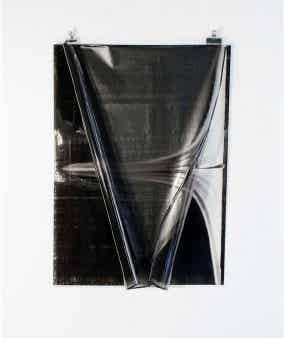
Sam Burford “Curling Over Self” (Timelapse photographic detail of the opening shot from Star Wars IV, 2010)
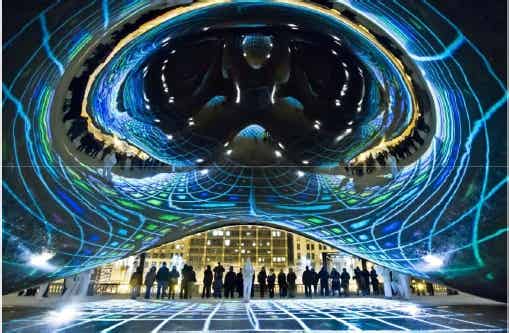
Arish Kapoor “Cloud Gate” & Luftwerk: “Luminous Field” (interactive video design with sound at Chicago’s Millennium Park. Opening Feb. 10, 2012) photographer: Natasha Jelezkina
Sci-fi artworks related to outer space are still not able to become reality. Although astronomical observatories gather an increasing number of images and informations of the universe topology, a more experiential contact with outer space is still, well, science fiction.
The new artistic production with outer space references creates new forms of fiction narratives based on older and contemporary sci-fi art and literature. The impossibility of space sci-fi to be fulfilled as reality opens the way to mythical imagination and archetypal symbols, in which a type of energetic power is sought to bring a meaning to the artwork and to repulse its obliterated materialization.
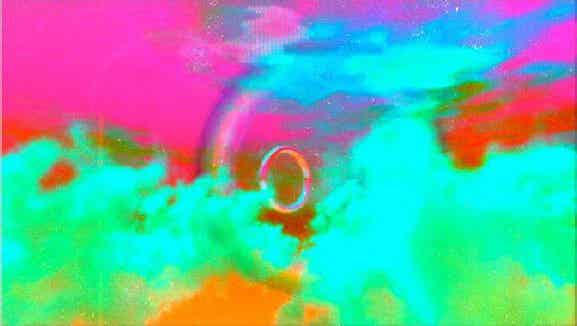
Yoshi Sodeoka “Universe/ Calibration” (Piece from an ongoing psychedelic/ambient video project, Sibyl 2012)
In “Sibyl”, a video-project in progress, Yoshi Sodeoka is inspired by ancient Greek mythology, shamanic rituals and progressive rock albums of the ’70s for a narrative visualization of the universal calibration. Metaphysical philosophy and mystical states are being filtered through a new perspective, which suggests future visions or an alternative perception of the present. The switching images in Yoshi Sodeoka’s video create an epileptic mood, a situation of an almost hypnotized observation that may bring the viewer closer to a universal, integrated experience.
The non-embodied experiences of psychedelic interfaces are enclosed within the limits of a personal experienced reality, no matter how transcendentally they may be transferred. However, there are initiatives that try in a systematic way to transgress the limits of utopia in the artistic praxis concerned with space technology and outer space exploration. “The Arts Catalyst” is a London-based organization which promotes artistic activities in new contexts, where art can interact with outer space and technology applications. Founder and director of the organization Nicola Triscott also led the creation of the committee ITACCUS in 2008 (Technical Activities Committee for the Cultural Utilization of Space). The committee seeks to promote and facilitate innovative ideas for the utilization of space (data, systems, applications) by cultural institutions and the broader faculty of humanities. “Kosmica”, the recently supported project of the Committee, is being set up as a number of conferences and art-space programmes that seek to bring forth alternative and cultural ideas about space. The Kosmica conference in Paris which took place on March 11th 2012 focused on artists working with satellites.
The projects are inspiring, but still create merely poetical and critical work about our role in space. The difficulties in the connection of art and technology regarding space require an extensive mobilization of the various competent institutions which will welcome and support such initiatives. This collaboration is as far at an early stage and an adequate number of promoted artistic operations remain in poetic simulations, inspired by fiction and historical narratives of the past, but nevertheless with innovative references.
For the project “Moon Goose Analogue”, artist Agnes Meyer-Brandis nurtures and instructs 11 geese in an analogue lunar-simulation/exhibition station until the moment the geese will be ready to migrate, carrying her to the moon. The idea is based on the 17th century book “The Man in the Moone” of English bishop Francis Godwin. Godwin composed the fiction while referring to some of the groundbreaking scientific theories of his time as Galileo, Kepler and Copernicus. Agnes Meyer-Brandis recreates this intriguing story of the Christian clergyman which is paradoxical considered as the first literary work of science fiction, linking the scientific observations of her project with the reformation of the literary narrative into an artistic installation.
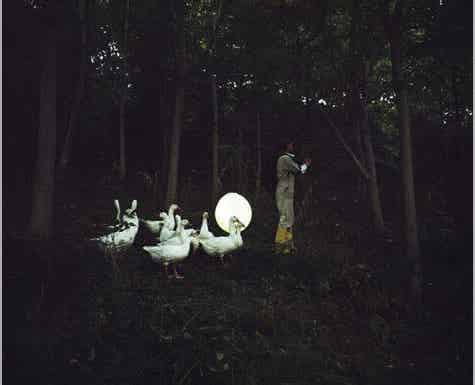
Agnes Meyer-Brandis “Mobile Moon Training, The Moon Goose Colony” 2011, VG-Bildkunst 2011/12, photographer: Tamara Lorenz
Although it is easy to be criticized as a utopian stalemate, artistic expressions of that kind offer an alternative narrative to the contemporary collective imaginary against the present relentless technocracy, pointing at the space’s broad conversion by economic mechanisms that ignore the social pleasures and benefits of an alternative development.
The new production of sci-fi artworks brings a reconsideration of outer space, a creative effort in order to recall the social interest which has been lost after the Cold War among the U.S. and the Soviet space missions. With a reversed action, this time with art reaching to technology and science, a welcoming ground is opened up to transform the uncanniness of outer space into a refuge of creative possibilities for people.
In this respect, the three-day conference entitled: “Envisioning Limits – Outer Space and the End of Utopia”, an initiative of the Free University of Berlin in April 2012, does not announce a regressive turn, but rather a coherent scientific and cultural alliance that is gaining supporters for the promotion of space art and participation, balancing between the possible impractical and the practical impossible…
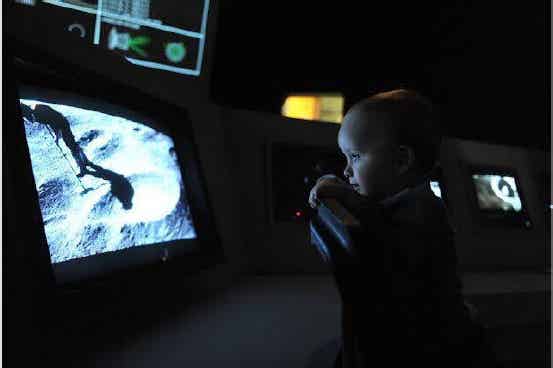
Photo of the Exhibition “Republic of the Moon” (FACT-London, European Touring Exhibition, 2012) photographer: Brian Slater
Links:
http://www.samburford.com
http://www.luftwerk.ne
http://www.sodeoka.com
[http://www.artscatalyst.org/about/article/moon_goose_colony_-the_film](http://www.artscatalyst.org/about/article/moon_goose_colony-_the_film)
http://www.artscatalyst.org/experiencelearning/detail/kosmica_paris
http://www.pollinaria.org
http://www.fact.co.uk/projects/republic-of-the-moon/
http://www.geschkult.fu-berlin.de/en/e/astrofuturismus
http://www.ffur.de
http://blogs.esa.int/artscience/